THE ARMENIAN GENOCIDE AND THE INTERNATIONAL RED CROSS
On the occasion of the 150th anniversary of the Red Cross
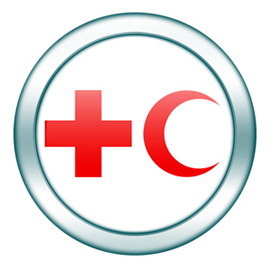 The emblem of the International
The emblem of the International
Red Cross and Red Crescent Societies
Up until the middle of 19th century, there was no a neutral international humanitarian principle or organization to provide necessary treatment for those who were wounded on the battlefield during the war. In 1859 Swiss writer, public activist Henry Dunant witnessed the battle of Solferino and organized the provision of the relief assistance for wounded. In his book entitled “A Memory of Solferino” (“Un souvenir de Solferino”) which was published in 1862 he put forward the idea of the necessity of the formation of international voluntary relief organization to help wounded soldiers in the case of war. The international conference held in Geneva in 1863 paved the way for the establishment of international humanitarian law and the International Red Cross organization.
The International Red Cross consists of several distinct organizations: the International Committee of the Red Cross, the International Federation of Red Cross and Red Crescent Societies and National Red Cross and Red Crescent Societies.
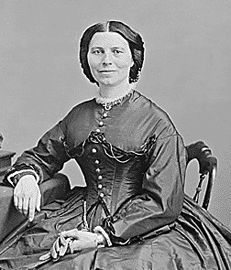 Clara Barton
Clara Barton
(1821-1912)
The International Committee of the Red Cross (ICRC), founded in 1863 in Geneva, Switzerland, initially had 25 members, citizens of Switzerland. The ICRC has a unique authority under international humanitarian law to protect the life and dignity of the victims of international and internal armed conflicts.
The International Federation of Red Cross and Red Crescent Societies, which includes National Red Cross Societies of almost all states in the world, was founded in 1919 to coordinate the activities of above mentioned societies in a peace time (since, according to its charter, ICRC operates only in cases of armed conflicts).
National Red Cross and Red Crescent Societies exist in nearly every country in the world. Each of these societies works in its home country according to the principles of international humanitarian law.
The role of Red Cross Societies in rendering assistance to the Armenian refugees who suffered the Genocide is significant. One of the first organizations that responded to the Turkish violence was the American Red Cross.
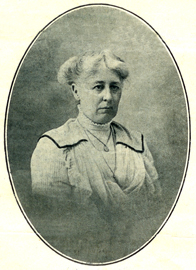 Emily Robinson
Emily Robinson
The American Red Cross was established in 1881, in Washington. Clara Barton became the first president of the organization. At the end of 19th century Clara Barton was already considered to be a national hero. In 1896 she leaded the American delegation that rendered huge assistance to Armenians who suffered Hamidian massacres. Before this mission Barton had offered relief to numbers of Americans during floods, diseases and other catastrophes, but the mission to the Ottoman Empire and Armenian provinces was a new experience for her. Americans not only provided the Armenian provinces with money and food, but also for the first time formed a specialized group under the aegis of the Red Cross to operate in Armenia.
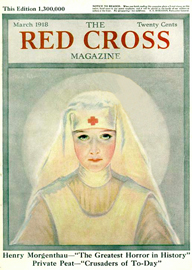 US ambassador Henry Morgenthau
US ambassador Henry Morgenthau
“The greatest horror in History”
“The Red Cross” magazine, March 1918
The delegation led by Clara Barton left for the Ottoman Empire in June 1896. She stayed in Turkey about eight months coordinating the humanitarian relief work of inner provinces. Just after her arrival Barton met with Tefik pasha, the minister of foreign affairs of the Ottoman Empire, represented the concerns of Americans about the pitiful condition of the people of the interior as a result of the massacres and pointed out that their objects were purely humanitarian, having neither political, racial, nor religious significance. The meeting ended with mutual understanding and five expeditions of the Red Cross passed through Armenian provinces to observe the situation in the field and to distribute whatever was needed. The Red Cross provided medical help to Marash and Zeitoun, later the expedition moved to Kharberd (Harpoot).Besides the medical assistance the Red Cross provided food and clothes to the people in need, seed to plant the ground and utensils to work with. Due to this relief work thousands of frightened inhabitants returned to the villages from which they had fled for their lives during the massacres and they stood on their feet again.
Thus the representatives of the American Red Cross worked in Armenian provinces of the Ottoman Empire for about four months providing overwhelming humanitarian aid to Armenians in need. Before returning home they placed the funds donated from New York and Boston in the hands of William Peet, the treasurer of the “American Board of Commissioners for Foreign Missions”. Later it was employed in the building and reconstructing of houses in the interior where all had been destroyed during the massacres.
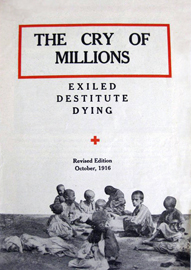 WWI period Red Cross Pamphlet on
WWI period Red Cross Pamphlet on
Armenian & Syrian Relief Work
A new powerful wave of relief from the Red Cross came during World War I, when Turkish authorities started the implementation of their old plan of extermination of Armenians. Medical and financial assistance was rendered to Armenian refugees by National Red Cross Societies of different countries.
The Armenian Red Cross and Refugee Fund was founded by Emily Robinson in autumn of 1914, in London. Emily Robinson was daughter of John Robinson, the editor of “Daily News”, one of the most authoritative newspapers of London. She founded “The Armenian Society” in 1912 and at the beginning of 1914 published a volume entitled “The Truth about Armenia”, representing in facts the annihilation of Armenians by Turks and the responsibility of the European states in that tragedy. Since December 1914 the Armenian Red Cross and Refugee Fund organized campaigns in which not only Armenians living in Great Britain took part, but also a number of British. A large amount of money was collected with the efforts of the organization which with the medicaments and clothes was sent to the council of Great Britain in Moscow and to Al. Khatisian for care of Armenian refugees. Among the members of the organization were famous British public figures and the activities were coordinated by Mrs. Bryce (wife of James Bryce).
The Russian Red Cross organized relief operations for thousands of Armenians who had fled to Eastern Armenia from the Ottoman Empire. Medical help was provided as well as clothes and food. Significant medical and financial assistance was rendered to refugees in Etchmiatzin. The organization also provided help to Erzrum and took part in organization of migration of Armenians, who were in danger to be annihilated by Turks, from Van to Eastren Armenia.
 Regulation of Red Cross Society of Armenia
Regulation of Red Cross Society of Armenia
Printed in Holy Echmiadzin, 1920
The American Red Cross provided huge aid to Armenians during Word War I. But the only method of aiding the Armenian population was transmission of the contributions through the American Ambassador at Constantinople. According to the article in "The New York Times" of April 29, 1915, the Turkish government had informed the State Department at Washington that the Red Cross would not be permitted to send surgeons and nurses to the aid of the Armenian people of the Turkish Empire. Not only were American Red Cross surgeons, nurses, and agents barred from Turkey, but also all other foreigners. Nevertheless, up until January 1918 this organization donated $ 1.800.000 for relief works in the Near East. Later this amount rose up to $ 6.000.000. Through the efforts of the American Red Cross personnel kidnapped Armenian children were restored to their parents and women in Muslim harems were freed. Several thousand children and women sought refuge with the Americans in the hope of finding their lost relatives. After the armistice of Mudros the Red Cross stopped its operations and offered the American Near East Relief to accept the responsibilities of the Red Cross in the Near East. An agreement between these organizations was signed in March 1919, in Konia and according to it the funds and personnel of the Red Cross were put under the control of the American Near East Relief organization.
An overwhelming level of relief assistance was organized for Armenians who suffered the Genocide also by the Armenian Red Cross detachments. The regulation of the Armenian Red Cross was adopted in March 1920, according to which the organization was under the aegis of the government of Armenia. The charter defined the goals, structure and principles of the society in details. The general administration of the society, that directed the organization, was in Yerevan.
The International Red Cross actively provided help to Armenians who suffered the massacres since its foundation. It made campaigns in different countries, offered medical and financial relief to Armenians during both Hamidian massacres and the Armenian Genocide of 1915-1922.
Thousands of documents and data preserved in the archives of this authoritative organization confirm the historical fact of the genocide against the Armenians, implemented by the Ottoman government.

Bodies of Armenian refugees dead of starvation and diseases, Echmiadzin, 1915

Staff workers of Echmiadzin hospital and orphanage, 1915

Shelter camp of the Armenian orphans, Echmiadzin, 1915

One of the shelter camps in Russian Armenia, 1915

The orphanage of "Brother Help" in Echmiadzin, 1915





